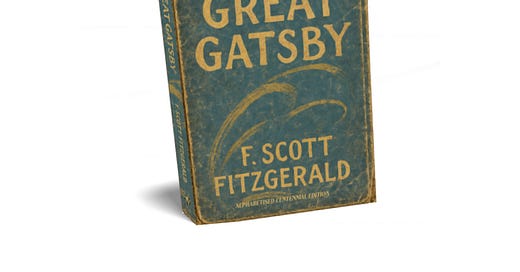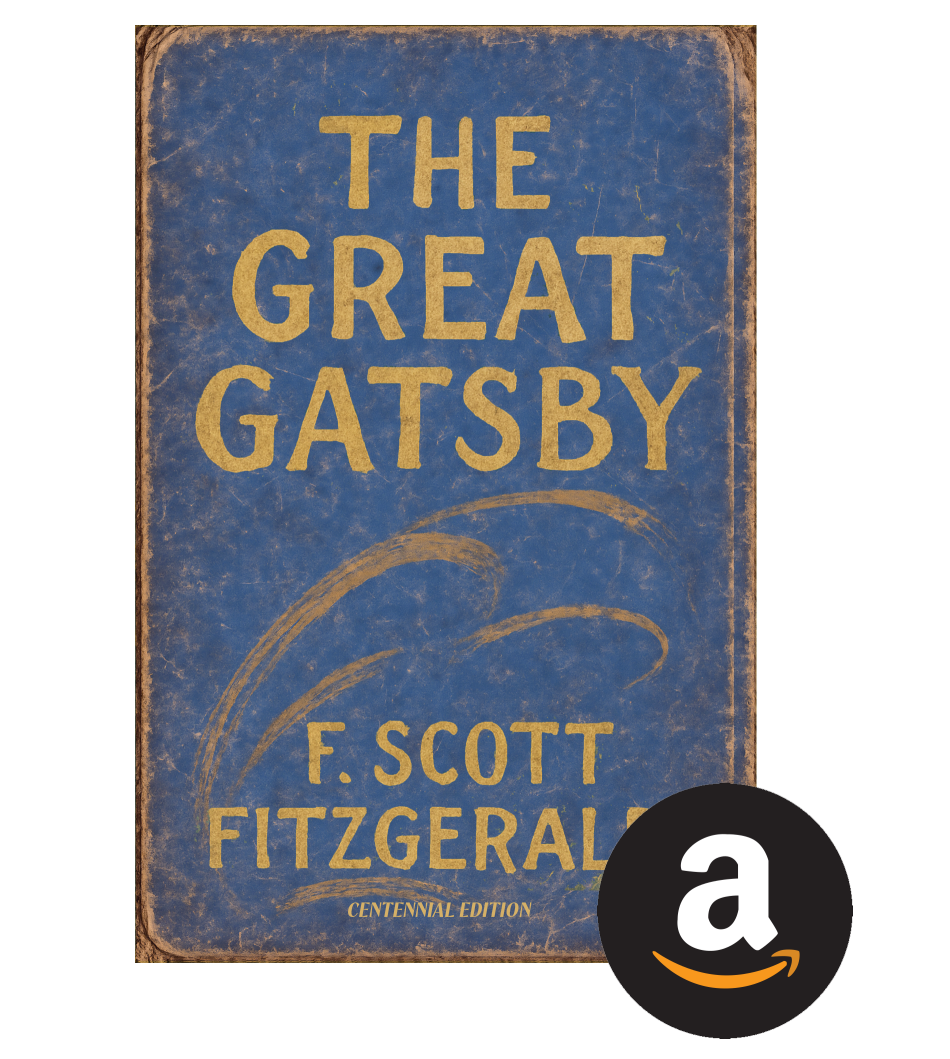Concrete Poetry & The Great Gatsby Re-Ordered
Or, what's the point of owning a publishing house if you can't pull rank?
Hola Fahrenhistas,
We’re handing straight over to The Boss this week - he’s done another one of his ‘things’ and we thought it best if he explains it to you himself…
In the early 1990s I became ever so slightly obsessed with the Concrete Poetry movement – specifically with the work of the artists Eugen Gomringer and Ian Hamilton Finlay.
At around the same time, the era of ‘desktop publishing’ was just beginning to bridge the gap between book publishing and technology and as a keen young publisher just starting out in my career, I embraced the new digital tools that many of my (more tweedy) colleagues couldn’t quite get their heads around.
I realized quickly on my journey into publishing that the new technologies offered more than just operational efficiencies—with a little imagination, and in the right hands, they offered new ways to play with the form & structure of the written word itself.
These thoughts dovetailed so neatly with my immersion into the world of Concrete Poetry that the logical next step was to bring together the new digital technologies and my burgeoning obsession for the form and the sculptural structure of the written word.
Through exposure to works such as Gomringer’s Constellations & Finlay’s Stone Carved Texts I became fascinated by the idea of applying some of their concepts to fully-formed existing texts.
Is story found only in sequence? Can meaning survive fragmentation? Might new meanings emerge—accidental, ambient, and poetic—from the ruins of arrangement?
This then, was how I came to alphabetise, print, and bind existing poems, plays, and eventually whole novels.
I’d anonymously leave the finished printed and bound works on the shelves of bookshops and libraries in the cities I visited, with no explanation, and no expectation of discovery or attribution.
Sometimes I’d leave an entire unabridged work, other times I’d leave an edition which contained an alphabetical list of all the words used in the text (and their frequency) – with an invitation for the reader to ‘write your own version’ on the remaining 200 or so blank pages of the bound book.
I have no idea how many of these volumes were discovered or indeed if any still exist. Neither do I have any idea if anyone ever took me up on my invitation to write their own.
Who knows, perhaps after a gap of 30 years this will provide an explanation to someone who stumbled across one of the finished works and wondered what on earth it was all about.
If pushed I could probably write a plausible piece explaining the artistic urge, meaning, and intent behind this project. The truth however is nothing more (or less) selfish than I engaged with this anonymous, and time-consuming project largely because I found it pleasing to do so.
Some 20 years after the last volume was abandoned into the wild, the poet Isabel Rogers wrote a poem entitled Alphabetic Order about the project, the last line of which I had tattooed on my wrist as an indelible reminder of my youthful obsession.
“We love what breathes”
This act in itself a kind of Concrete Poetry etched in ink on skin.
Among the many texts that became part of this arcing alphabetical project was The Great Gatsby, a novel that holds a special place in my heart and the hearts of so many others.
For many reasons it seemed to me that Gatsby was a perfect subject for the alphabetising project.
That said, this alphabetised edition of The Great Gatsby is not a puzzle to be solved, or a parody to provoke. It is rather, a re-seeing of language in the raw - a confrontation with the building blocks of a story we think we know.
Removed from their narrative scaffolding, Gatsby’s words fall into new patterns, unexpected rhythms, and visual clusters. “Daisy” “dream” and “death” no longer emerge from plot, but jostle for position in a flattened, democratic field. The result is a text not about the American Dream, but made of it—its’ language laid bare, its’ seductions and emptiness exposed with surgical neutrality.
In my view, the Universe is a minx, and so she has proved again.
2025 marks not only the 100th anniversary of the original publication of The Great Gatsby, but also the centenary of those two towering figures of the Concrete Poetry movement: Eugen Gomringer & Ian Hamilton Finlay – the very artists who inspired my devotion all those years ago.
This neat alignment of anniversaries gives rise to the edition we've published.
By celebrating this triple centenary—of Gatsby, Gomringer, and Finlay—I hope to honour not only a literary classic, but the enduring power of language to surprise, subvert, and be strange again.
Also, for those of you who know me, you’ll recognize that the gorgeous circularity of it all was impossible for me to resist.
Chris McVeigh, April 2025
So there you go, we’ve published an alphabetised version of The Great Gatsby.
Frankly we thought he’d lost his mind, but honestly now we’ve got our hands on them we can see they really are small weird objects of beauty & wonder - we’ve all become a bit obsessed with them.
You can grab this unique little slice of Publishing (and Fahrenheit) history direct from us
Oh and if you’re SO SQUARE that you fancy reading The Great Gatsby in the order F. Scott Fitzgerald intended, we made a companion edition that's pretty beautiful too…
Okay, that’s all from us this week - trust us, this one sounds weird but it really is a thing of beauty.
We kiss you,
xx
P.S. You can also BUY THEM FROM AMAZON (the story of how we persuaded Amazon to list the alphabetised version is pretty much a novel in itself - and as it turns out The Boss has ended up sharing credits with F. Scott - and yes, we are getting worried that his ego is getting out of control).






